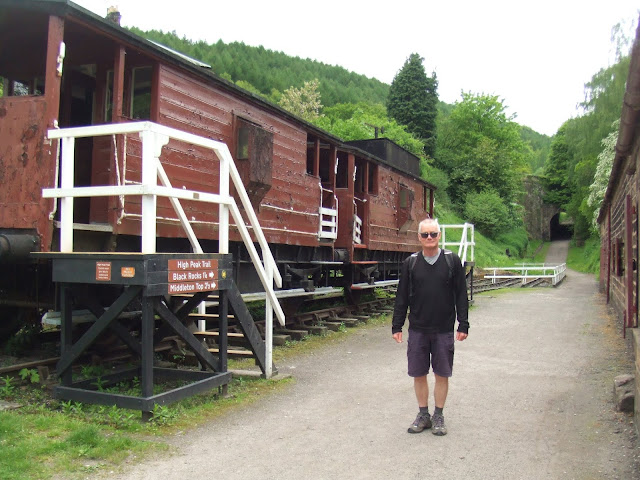40A Lincoln is the shed in question, one I never reached in the
days of steam. It closed in 1964, five years before we first visited the city. This
was the main London North Eastern Railway shed adjacent to Brayford Wharf. The
shed buildings were not pulled down. Instead, they were incorporated as part of
Lincoln University. The space now includes an auditorium for live events, a bar
and the student’s union.
The façade is unrecognisable as a former locomotive depot. A
modern extension in steel and glass has transformed its appearance. Only from
the inside can you see the original arched brickwork pattern on two levels,
which is also visible on the old photograph of the site as it used to be. In
both cases, East Holmes signalbox - next to the main line out of Lincoln
station - gives you your bearings.
A brief history of the engine sheds in Lincoln -
The original 2 track Great Northern Railway shed was east of
Lincoln GNR station. It was opened in 1851 but replaced because movements on
and off the shed were complicated by the need to regularly close the roads at
level crossings. The replacement 4 track
GNR shed was built in 1875 west of Lincoln Central station and south of
Brayford Pool at Brayford
Wharf. Originally coded
LIN, it passed to the LNER in 1923 and became 40A under British Railways. It
closed in 1964, after which Lincoln was a signing on point for drivers, coded
LN up to May 1973.
The Midland Railway built a 2-track shed south of St Marks
station in 1867, which was closed in 1959, demolished in 1974 and is now a car
park.
The Manchester Sheffield and Lincolnshire Railway built a
shed at Sincil Junction, east of the city centre in 1874, which was closed by
the LNER in 1939 and became a stabling point and carriage servicing facility
and from 1956 also provided short-lived diesel servicing. It was a sub-shed of
40A in BR days and it closed in 1957 and then became a Stagecoach bus garage.
The Great Eastern Railway built a shed at Pyewipe Junction, west
of the city, which closed in May 1925 and its men were then transferred to
either the GN or the Great Central [former MSLR] shed.
There was also a small 2 track GC shed built at Pyewipe
Sidings which was opened in 1897.






























